Exploring Palace Towers in Dubai's Real Estate Market
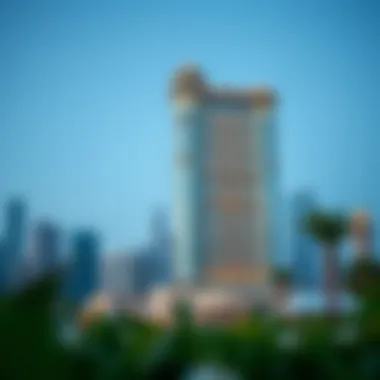
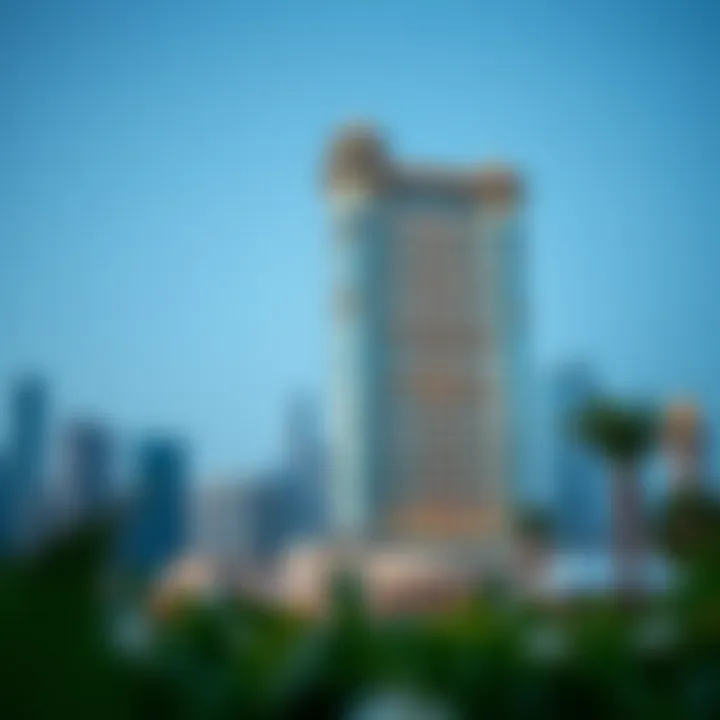
Intro
The skyline of Dubai is not just about height; it’s about character. Amidst the glitter and glamour, palace towers stand as cultural landmarks and symbols of opulence. These towering structures have transcended mere architectural designs, morphing into pivotal components of Dubai's real estate landscape. To truly appreciate these masterpieces, one needs to grasp not only their aesthetic value but also their socio-economic implications.
Palace towers, with their intricate designs and unparalleled luxury, offer a glimpse into the lifestyle that Dubai champions. They are not just residences or commercial spaces; they evoke a sense of grandeur that reflects the very essence of the emirate. Understanding their role requires a look into historical contexts, current market dynamics, and the future trajectory within the realm of real estate.
As an investor, home buyer, or market analyst, recognizing the significance of these towers can aid in navigating the nuances of property values and investment potentials. It’s pivotal to dive deeper into market insights and investment opportunities that these magnificent structures present.
Let’s embark on this exploration to uncover what palace towers signify in the broader scope of Dubai’s thriving real estate scene.
Intro to Palace Towers
Palace towers in Dubai are more than just lofty structures; they symbolize the grandeur of luxury living. These remarkable buildings encapsulate a blend of local traditions and contemporary designs that set them apart in the global real estate landscape. Understanding their architecture and significance provides insight into not only the physical structures themselves, but also the socio-economic dynamics of Dubai.
The importance of palace towers in Dubai lies in their ability to attract both residents and investors. As the city positions itself as a premier destination for opulence, the allure of palace towers stretches beyond mere aesthetics. They serve as status symbols, showcasing architectural ingenuity while offering an exclusive lifestyle. Investors recognize the unique value in properties that carry this distinction, often eager to tap into the advantages they present in the flourishing Dubai market.
Another critical aspect to consider is the cultural significance woven into the fabric of palace towers. These structures often reflect the heritage of the region, integrating elements that resonate with Dubai's history and identity. The artistry involved in their design can tell stories of the past while paving the way for the future.
In summary, the introduction to palace towers sets the stage for a deeper exploration of their architectural nuances and the roles they play within Dubai's bustling real estate scene. It urges investors and stakeholders to delve into not just the buildings themselves, but also the opportunities they present and the cultural narratives they represent.
Defining Palace Towers
Palace towers embody the essence of luxury architecture that can be observed throughout Dubai. Stature and scale are the first impressions these towers impart. Unlike conventional apartment buildings, they often feature intricate designs, lavish amenities, and expansive views of the stunning skyline.
These towers blend modern comforts with traditional flair. Characteristics such as ornate facades, lush landscaping, and cutting-edge technology come together to create residences and commercial spaces that meet the aspirations of elite clientele.
Historical Evolution of Royal Towers
The evolution of palace towers can be traced back to the early development of Dubai as a global city. Initially modest in design, these structures began to reflect the wealth and ambition of the United Arab Emirates. Not only have they adapted over time to incorporate modern engineering techniques and sustainable practices, but they have also maintained cultural ties that speak volumes about the identity of the Emirati people.
Historically, as Dubai emerged from its humble beginnings as a fishing port, the construction of royal towers played a significant role in its transformation. Each new tower often marked an era of economic growth and social change, symbolizing aspirations that outgrew the past. Over the decades, these architectural marvels continued to captivate imaginations and encourage investment, shaping the landscape of a city that refuses to settle for anything less than extraordinary.
By embracing the past while looking forward, palace towers manifest the relentless drive for progress in Dubai’s real estate market.
Architectural Features of Palace Towers
The architectural features of palace towers play a critical role in both defining their aesthetic appeal and fulfilling practical functions within Dubai's vibrant real estate market. These features not only showcase luxury and grandeur but also reflect cultural heritage and modern advancements in design and construction. With Dubai being a melting pot of innovation and tradition, the integration of architectural elements in palace towers has become paramount to meeting the expectations of investors, home buyers, and visitors alike.
Design Principles and Styles
The design principles underlying palace towers are both varied and intricate. They often draw inspiration from traditional Islamic architecture, with intricate latticework, arabesques, and domed structures that create a silhouette distinctive to the region. At the same time, contemporary styles are incorporated, leading to a hybrid design that is uniquely Dubai.
- Harmony with Surroundings: A primary design goal is to ensure that the towers blend harmoniously with the cityscape, reflecting the beauty of their location.
- Verticality: Emphasizing height, these structures often employ elongated forms that create a striking presence against the skyline.
- Functionality: Even while pursuing an attractive form, these designs consider usability, accommodating residential, commercial, and recreational spaces within a compact footprint.
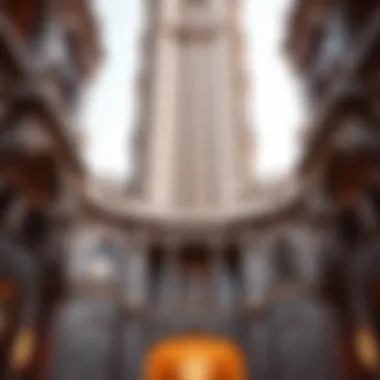
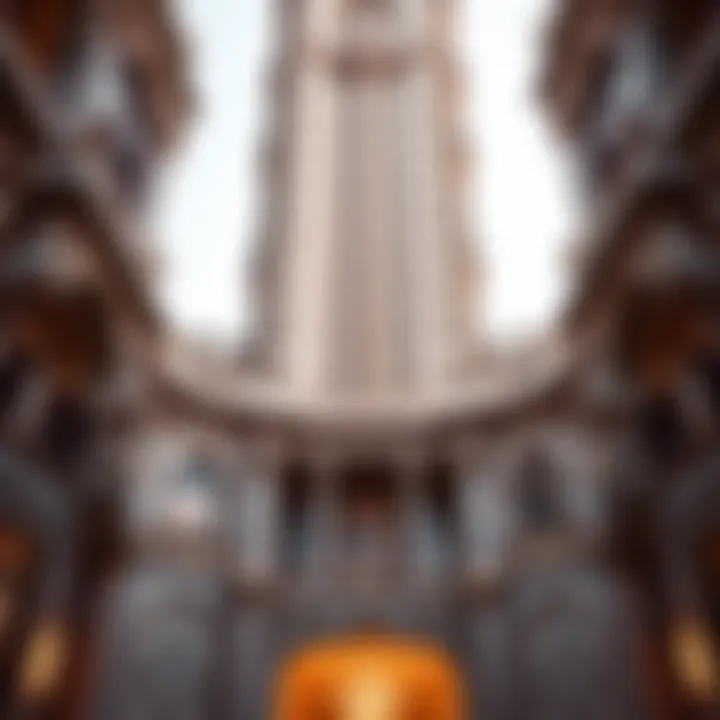
The variety of styles—from minimalistic modern designs to opulent Baroque elements—ensures there's a palace tower catering to every taste. Each design brings a unique narrative to the structure, making them not just residences but symbols of cultural identity and innovation.
Materials and Construction Techniques
The choice of materials and construction techniques used in palace towers is indicative of an evolving market driven by both tradition and technology. Designers and architects have increasingly leaned toward high-quality, sustainable materials that not only enhance longevity but also carry aesthetic value.
- Local Materials: Many towers incorporate local stone, glass, and metals, connecting the buildings to their geographical roots.
- Innovative Construction Methods: Techniques like precast concrete panels and modular construction have expedited the building process while ensuring top quality. 3D printing is also on the rise, allowing for customized features that were not possible before.
- Advanced Engineering: Reinforced structures are necessary to withstand the region’s harsh climatic conditions and occasional seismic activities.
With such meticulous attention to detail in material selection and construction, palace towers not only become architectural marvels but also paradigms of engineering excellence, ensuring longevity and safety for residents and investors alike.
Sustainability in Tower Design
As global awareness of environmental issues grows, sustainability has emerged as a key consideration in the design and construction of palace towers. These structures are now often built with eco-friendly principles in mind, aiming to minimize their environmental footprint while providing luxurious living conditions.
- Energy Efficiency: Integrating smart technologies that optimize energy use within towers, such as solar panels and energy-efficient windows.
- Water Conservation: Advanced plumbing systems and water recycling techniques are increasingly common, making sure that water usage is sustainable in these lavish homes.
- Green Spaces: Many modern palace towers include green roofs, terraces, and communal gardens to improve air quality and provide natural aesthetics, enhancing the overall living experience.
In summary, sustainability isn't just a buzzword anymore; it's a vital aspect influencing the architectural features of palace towers, directly impacting property values and investor sentiments. By promoting responsible development, these towers not only enrich the urban landscape but also contribute positively to the environment and community well-being.
The architectural features of palace towers in Dubai are a fascinating blend of tradition, innovation, and sustainability, making them a focal point of real estate investment and cultural identity.
Palace Towers in Dubai's Real Estate Market
The landscape of Dubai’s real estate market has been significantly shaped by the emergence of palace towers, standing as symbols of luxury and architectural innovation. In a city known for its ambitious skyline, these towers not only serve as residences but also encapsulate the essence of opulence that Dubai is famed for. The importance of understanding the dynamics surrounding palace towers lies in their multifaceted role in real estate. From influencing property value to creating investment opportunities, the implications are extensive.
Current Market Trends
Presently, the market for palace towers in Dubai is witnessing several notable trends. Firstly, there is a marked preference for luxury developments among a diverse clientele looking for high-end living experiences. Properties in prime locations, particularly those with views of the Burj Khalifa or situated along the coast, are in demand. These towers have become more than just homes; they embody a lifestyle choice, emphasizing exclusivity and prestige.
Moreover, developers are paying close attention to the amenities offered within these towers. Saunas, sky gardens, and integrated smart home technology are just a few features that potential buyers are highly interested in.
- Increased Focus on Lifestyle: Buyers are inclined towards developments that provide integrated options for leisure, wellness, and convenience.
- Sustainable Practices: There’s a growing inclination towards sustainability, pushing developers to incorporate eco-friendly materials and practices.
- International Buyers: Wealthy expatriates and foreign investors are increasingly eyeing palace towers, contributing to soaring prices and competition in prime areas.
Investment Opportunities and Risks
Investing in palace towers presents both alluring opportunities and noteworthy risks. On one hand, the potential for high rental yields is appealing. Investors can capitalize on the consistent demand from affluent tenants looking for luxury accommodations. For instance, prominent towers attract corporate executives and expatriates, leading to reliable rental income.
However, the stakes are equally high.
- Market Volatility: The luxury market can be susceptible to fluctuations tied to global economic conditions. Any downturn could impact demand and property values.
- Maintenance Costs: Ownership comes with ongoing costs, especially in high-maintenance luxury towers that require regular upkeep.
- Regulatory Changes: Changes in foreign ownership laws or real estate regulations could alter the investment landscape, making careful market observation necessary.
The key is to conduct thorough research and possibly seek local expertise when navigating this niche real estate market.
Impact on Property Values
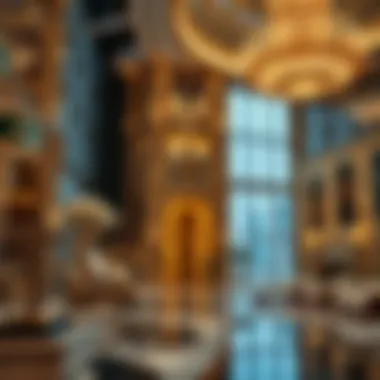
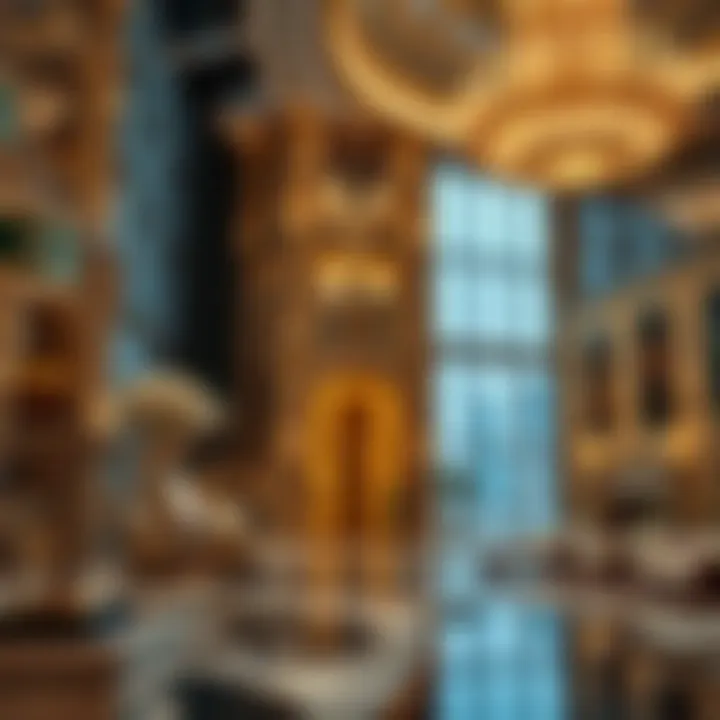
Palace towers have a significant impact on the overall property values in their vicinity. Their presence tends to elevate the status of a neighborhood, attracting higher property values and enhancing the desire to live nearby. For instance, properties located adjacent to a high-end palace tower often see their value rise due to the perceived benefits of proximity to luxury living.
Furthermore, these structures often become benchmarks for price per square foot in the area, influencing both sales and rental prices more broadly.
- Gentrification: New developments can lead to gentrification, altering the community dynamics as more affluent buyers enter the market.
- Land Value Increase: The construction of a palace tower can trigger rounds of development, boosting land values significantly around it.
- Market Sentiment: The luxury appeal contributes to a positive perspective of the market, creating a perception of desirability and prosperity, which can lead to greater appreciation over time.
Cultural and Social Implications
The role of palace towers in Dubai extends beyond mere aesthetics; they serve as symbols of wealth, history, and community. Each tower encapsulates a mix of cultural narratives and aspirations, shaping the urban fabric while influencing the social dynamics within the ever-growing metropolis. Understanding these implications is crucial for investors and residents alike, as they pivot their eyes not only toward the architectural splendor but also toward the cultural resonance these towers have.
"Palace towers transform the skyline, but they also craft an identity that stays rooted in rich traditions."
Cultural Significance of Palace Towers
The cultural significance of palace towers in Dubai is multifaceted. Architecturally, they often echo the grandeur of Islamic and Arabic styles while incorporating modern design elements. This creates a bridge between tradition and innovation. For instance, the opulence seen in the intricate patterns and arched entries reflects a deep respect for historical aesthetics. Yet, they meet the demands of contemporary living and business environments.
Moreover, these towers often house luxury amenities that cater to affluent lifestyles, which enhances the city's allure as a hub for global elites. Their very presence signals a commitment to luxury living that permeates more than just the real estate market; it also affects the local culture, lifestyle, and even tourism. Tourists are drawn to photograph not only the towers but the stories engraved into their facades. Here, we see how architecture informs cultural identity, providing a canvas on which the narrative of modern Dubai is painted.
Palace Towers and Community Development
Beyond mere architectural feats, palace towers play a vital role in the shaping of communities. They act as focal points around which neighborhoods develop, often accompanied by parks, shopping districts, and cultural centers. This design strategy fosters a sense of community, giving residents layers of interaction within their immediate environment.
Interestingly, the investment in palace towers doesn't just end with the structures themselves. Such developments often lead to enhanced infrastructure, improved transport links, and an overall elevation of the neighborhood. This results in increased property values, creating a ripple effect benefitting local businesses and services.
For potential investors and residents, understanding the community implications of these towering structures is essential. They don't just buy a unit; they are investing in a lifestyle, a communal narrative steeped in both luxury and cultural identity. That's where the real value lies, intertwining personal aspiration with community development, bound to the very essence of what Dubai embodies in the contemporary world.
The impact of palace towers on community development is a testament to their importance, influencing everything from local economy and neighborhood dynamics to cultural perceptions and global recognition. Such structures indeed transform urban landscapes.
Comparative Analysis
When it comes to understanding the architectural and socio-economic landscape of Dubai’s real estate sector, performing a comparative analysis is crucial. This section highlights the differences and similarities between palace towers and traditional skyscrapers, giving insight into their unique features, values, and influence in the market. This analysis helps investors and stakeholders draw informed conclusions about which properties might best suit their needs and aspirations.
Palace Towers vs. Traditional Skyscrapers
In the vibrant tapestry of Dubai’s skyline, one can spot both palace towers and traditional skyscrapers soaking up the sun. Each category has its unique charm and purpose, but how do they stack up against each other?
Palace towers are characterized by their opulent designs, often draws inspiration from Islamic architecture. They include intricate domes, expansive atriums, and lush landscaping, making them visually striking and culturally significant. In contrast, traditional skyscrapers are usually focused on functionality, often prioritizing efficiency and modern aesthetics over historical or cultural references. This difference becomes apparent when looking at their layouts—palace towers might feature larger, more open common spaces and incorporate cultural elements, while traditional skyscrapers might lean toward compact designs intended for maximized occupancy.
- Cultural Relevance:
- Market Appeal:
- Palace Towers: Reflect a rich cultural heritage, often becoming landmarks that evoke national pride.
- Traditional Skyscrapers: More generic, usually designed for international appeal without strong ties to local culture.
- Palace Towers: Cater to a luxury market segment, often attracting affluent buyers looking for unique living experiences.
- Traditional Skyscrapers: Appeal to a broader demographic, including business professionals and expatriates.
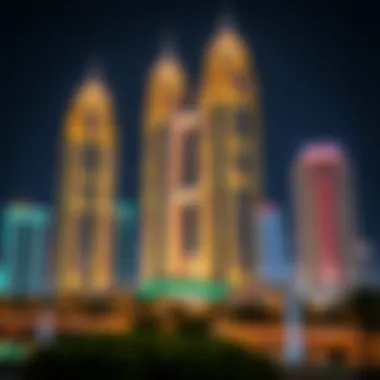
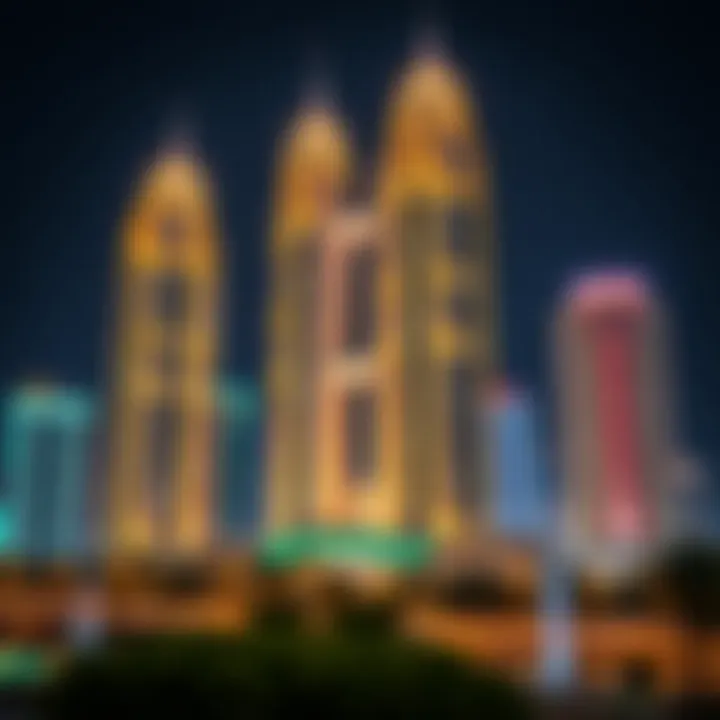
"The aesthetic and function of structures often represent the society's values, and this is vividly depicted in the contrasting architectures of palace towers and traditional skyscrapers."
International Examples of Palace Towers
Looking beyond the sands of Dubai, different countries have made significant contributions to the concept of palace towers, creating structures that define their cultural identities.
- The Burj Al Arab, Dubai, UAE: Often dubbed as the world’s only seven-star hotel, its billowing sail design is a fantastic example of modern-day palace tower architecture that melds luxury with local culture.
- Al Faisaliah Center, Riyadh, Saudi Arabia: This tower combines modern design with Islamic architectural features, showcasing a push towards integrating tradition within contemporary structures.
- Shahrisabz Palace Tower, Uzbekistan: This tower is a reflection of ancient Persian architecture, rich in history and cultural significance.
By analyzing these examples, it's clear that palace towers serve a dual purpose: they function as luxurious real estate while anchoring cultural narratives of their respective locations. Each structure tells a story not only through its design but also in how it interacts with the social fabric.
Future of Palace Towers
The future of palace towers in Dubai is steeped in potential and change. As the landscape of real estate continues to evolve, these architectural giants stand at the crossroads of tradition and innovation. Their prominence, both in design and significance, guarantees that palace towers will remain a focal point for investors, developers, and the public alike. The ongoing dialogue about these structures pertains not just to aesthetics but also to their socio-economic implications in an ever-competitive market.
Emerging Trends in Design and Architecture
Palace towers are not just evolving; they are embracing modern trends that cater to a sophisticated clientele. One significant trend is the integration of smart technology into building designs. Home automations, energy-efficient systems, and sustainability practices are taking center stage.
- Smart Building Technology: Developments like the Al Maktoum Tower incorporate IoT (Internet of Things) for climate control, lighting systems, and enhanced security features, aiming at creating top-notch living conditions.
- Sustainable Materials: There’s a growing inclination towards the use of eco-friendly materials such as recycled metals and green concrete. This not only reduces environmental impact but also meets the demands of the eco-conscious buyer.
- Mixed-Use Developments: Future projects will likely focus on mixed-use spaces that combine residential, commercial, and leisure facilities under one roof, enhancing community interaction and convenience.
Incorporating these trends may pave the way for palace towers to stand not just as tall structures but as symbols of innovation and sustainability within Dubai's urban fabric.
Predictions for the Market
Looking ahead, the market for palace towers presents a blend of optimism and caution. While the demand for luxury living spaces is projected to grow, several factors will play critical roles in shaping the viability of investments in this segment.
- Market Demand and Affordability: A prediction indicates that there will be a growing divide between luxury and affordable housing. Developers must ensure that their offerings remain attractive amid fluctuating economic conditions.
- Regulatory Changes: Evolving regulations will influence how palace towers are constructed and marketed. Investors should keep an eye on government policies nourishing the real estate market.
- Global Economic Influences: The multicultural allure of Dubai continues to attract international buyers. Fluctuations in global economies could influence investment patterns. If economic conditions in key markets remain stable, demand for palace towers may rise.
"Understanding the dynamics of local and global markets is key to making informed decisions in real estate investment."
In essence, the trajectory of palace towers is promising, yet laden with various considerations. Investors and stakeholders must navigate this landscape carefully, balancing tradition, innovation, and market realities. As we embrace this future, it’s clear that palace towers will not only define the skyline of Dubai but will also reflect the aspirations and ambitions of a new generation.
Closure
In summing up the discussion on palace towers in Dubai's real estate market, it becomes clear that these structures represent much more than mere architectural feats. They embody cultural aspirations, economic conditions, and luxurious lifestyles that are unique to the region. Palace towers serve as landmarks of opulence, often symbolizing the wealth and vision of not only their investors but also the broader community. Their towering presence in the skyline is akin to a beacon for those seeking refined living experiences as well as lucrative investment opportunities.
Summary of Key Insights
The exploration of palace towers has uncovered several critical insights:
- Architectural Brilliance: The design and construction techniques utilized in these towers are at the forefront of modern architecture, blending innovative features with sustainable practices.
- Economic Impact: The vitality of Dubai's real estate market can be traced back to these magnificent towers, which significantly contribute to property values and urban development.
- Cultural Resonance: Beyond aesthetics, palace towers are deeply intertwined with the cultural identity of Dubai, often serving as venues for events that reflect the UAE's rich heritage.
- Investment Viability: The investment potential in such properties is intriguing, marked by trends that indicate a steady demand among affluent buyers.
Overall, these insights highlight the multifaceted significance of palace towers, making them essential to understanding the broader dynamics of Dubai's real estate sector.
Implications for Future Investments
When considering future investments in palace towers, various factors warrant attention:
- Market Trends: The burgeoning interest in luxury living indicates that palace towers remain a preferred choice for high-net-worth individuals seeking residential options in Dubai.
- Sustainability Focus: As environmental awareness rises, investors are likely to favor buildings that prioritize energy efficiency and sustainable practices.
- Legislative Developments: Changes in property laws and regulations can have profound implications on investment strategies, making it imperative to stay updated on any new policies affecting real estate.
- Technological Innovation: Embracing smart technology in construction and building management is crucial, ensuring that future developments are both efficient and appealing to tech-savvy buyers.











